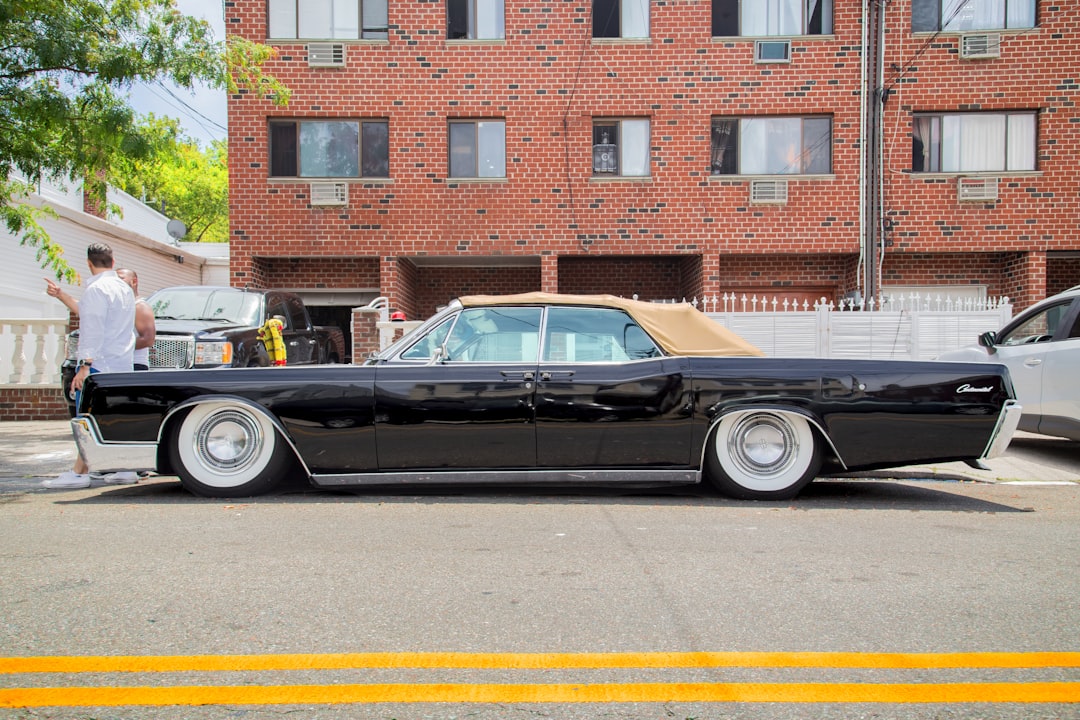The Evolution of the Ford Thunderbird

Publié le 12/07/2025
The Ford Thunderbird stands as a hallmark of American automotive history, a symbol of a bygone era that blended style, innovation, and performance. Launched en 1955, le Thunderbird était plus qu'une simple voiture ; c'était une déclaration de liberté, d'ambition et de l'esprit de la route ouverte. This article will explore the rich tapestry of the Thunderbird's history, its impact on classic car culture in Michigan, and its lasting legacy in the realm of vintage automobiles.
The Birth of the Thunderbird
A New Concept in American Cars
In the post-war 1950s, American car manufacturers were in a race to dominate the burgeoning automotive market. The Ford Motor Company sought to capture a new demographic: affluent individuals who desired luxury alongside performance. This led to the conception of the Thunderbird, designed as a personal luxury coupe. Unlike other cars at the time that emphasized speed alone, the Thunderbird brought elegance and style to the forefront.
First Generation (1955-1957): Iconic Design
The first-generation Thunderbird featured distinctive curves and an unmistakable front grille. It set itself apart with removable hardtops and an array of vibrant colors. These design choices reflected the optimism of the era and captured public imagination. The iconic two-seat configuration gave it an air of exclusivity that appealed to many aspiring Americans.
The Evolution through Decades
Second Generation (1958-1960): A Bold Statement
As tastes evolved, so did the Thunderbird. The second generation introduced fins and an elongated body shape that mirrored contemporary trends in automotive design. It was during this period that the Thunderbird began to embrace more luxurious features, catering to those who wanted performance without sacrificing comfort.
The Changing Face: From 1961 to 1976
Each new generation brought a fresh identity to the Thunderbird while retaining its brand essence. Notably, during this span, Ford embraced various design elements influenced by European styles. In 1964, it transformed into a four-passenger vehicle without losing its luxurious appeal. The shift marked a pivotal moment in American automotive history as it showcased adaptability amidst changing consumer expectations.
Michigan Car Culture
A Hub for Automotive Innovation
As I delve into Michigan's car culture, one cannot overlook its intrinsic connection to the automotive industry. As home to the Big Three—Ford, General Motors, and Chrysler—Michigan has long been regarded as a crucible of innovation. Events like the Detroit Auto Show celebrate various vehicles while reflecting on their historical significance.
Community Engagement Through Classic Cars
The love for classic cars runs deep across Michigan. Numerous gatherings and car shows exist où des passionnés montrent leurs précieux Thunderbirds parmi d'autres automobiles vintage. Ces événements ne sont pas de simples expositions mais des rassemblements célébratoires où la nostalgie alimente les conversations sur le design et les avancées en ingénierie au fil des décennies. Beaucoup de ces passionnés font partie d'un club local qui favorise une communauté engagée autour de la préservation et de l'appréciation des voitures classiques, renforçant ainsi le lien entre héritage automobile et culture régionale.
The Impact on Classic Cars
Collectibility and Market Trends
Ford’s Thunderbird quickly became a sought-after model for collectors. Its blend of luxurious features with sporty chops led to varied auction prices depending on condition and rarity. Certain models from earlier generations have fetched significant sums at auctions, positioning them among investment-grade classics.
Preservation Efforts
Enthusiasts are dedicated to preserving Thunderbirds through restoration projects or by keeping them in pristine original condition. Many vintage automobile clubs focus on ensuring that these beautiful machines remain functional pieces of history rather than mere collectibles gathering dust in garages.
Design Legacy
Continuous Influence on Future Models
The Thunderbird’s design principles have served as inspiration for numerous vehicles over the decades. Its combination of elegance and performance can be seen resonating in many designs throughout history, influencing both domestic manufacturers and international counterparts alike. Notably, later Ford models incorporated design traits originally popularized by the Thunderbird.
Lasting Popularity
Even after production ceased in 2005, interest in Thunderbirds thrives. Websites dedicated to Thunderbirds offer enthusiasts forums for discussion about maintenance tips, restoration advice, and interested buyers/sellers looking for specific models.
- Cultural Significance: Symbol of freedom and luxury during post-war America.
- Design Evolution: Adaptability showcased through different generations.
- Community Impact: Focused car culture centered around classic vehicles.
- Collectibility: Valued investment highlighting market trends.
- Legacy: Influences on both past and current automotive design.
Understanding a Timeless Classic
Reflecting on the history of the Ford Thunderbird reveals much more than just specs or design details; it encapsulates feelings of nostalgia, aspiration, and community spirit associated with American automotive culture. The Thunderbird remains an enduring symbol of style—a beautiful amalgamation of craftsmanship, engineering excellence, and iconic American ethos. Its legacy continues to inspire future generations of automotive enthusiasts who embrace both its heritage and innovation in design.
